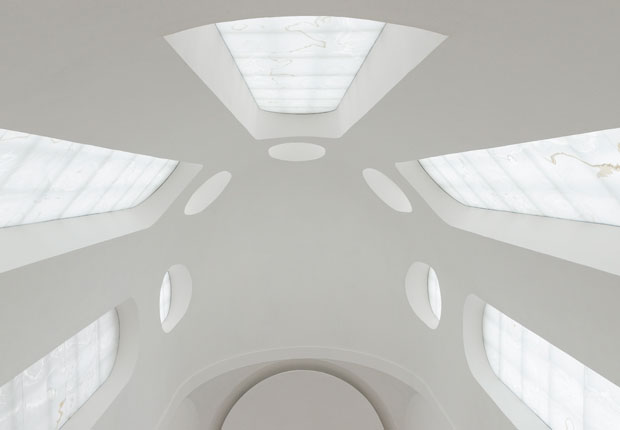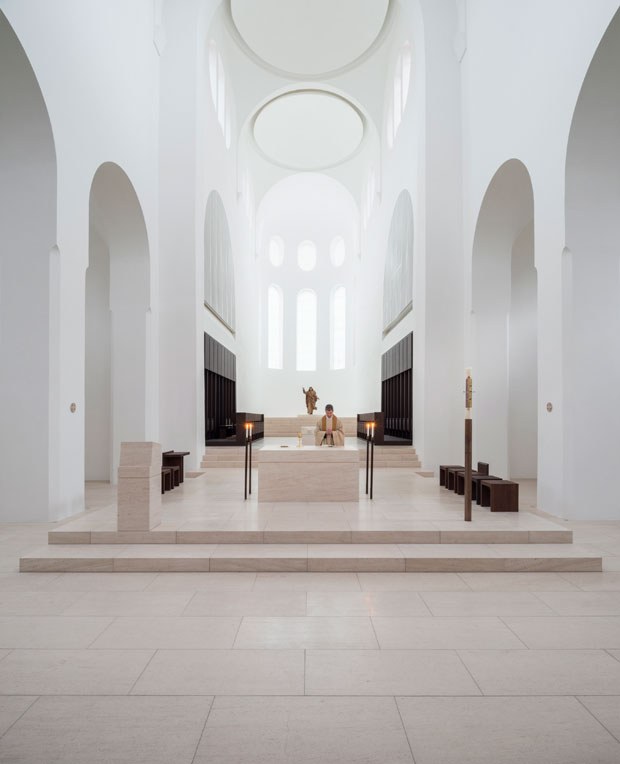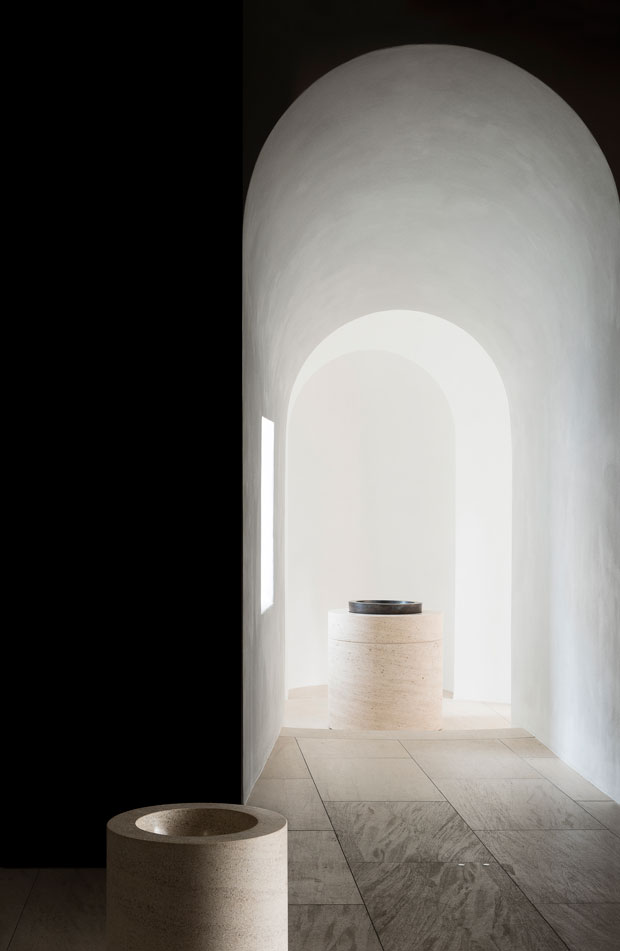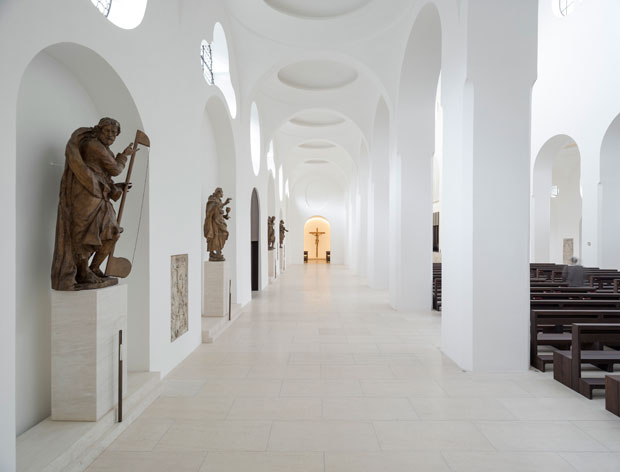
Pawson church among Design Museum nominations
Beautiful retuning of light and space sees St Moritz Church in Augsburg lead Designs of the Year nominations
Kate Moss’s favourite app, a floating school in a Nigerian lagoon, friendly lamp posts, virtual mountain rescue teams, a recoiling mudguard for the discerning cyclist and a beautiful church re-imagined by architect and Phaidon author John Pawson are among the 76 nominations for The Design Museum London’s Designs of the Year 2014.
Designs of the Year gathers together a year of cutting-edge innovation and original talent; showcasing the best in global architecture, digital, fashion, furniture, graphic, product and transport design.
As well as John Pawson – nominated for his stunning reinterpretation of the St Moritz Kirke in Augsburg, Germany - other names on the list include: Zaha Hadid, Stephen Jones, David Chipperfield and Miuccia Prada who all take their place alongside some very interesting crowd-funded start ups and student projects.

All of the nominated designs go on display at the Design Museum, in an exhibition open from 26 March to 25 August 2014. A panel of experts will choose a winner from each category and one overall winner, announced later in the year.
You can read our more in depth story about the church on the left but this week we caught up with John Pawson to ask him for a few thoughts on the project which saw the architect laminate the windows with a thin layer of onyx for a project he has referred to as "a retuning from aesthetic, functional and liturgical perspectives". He added that "considerations of sacred atmosphere" were "at the heart of the project".
“Obviously it was a baroque church. Bombed by the British and rebuilt by father and son architects in the 1950s who did a very good, and interesting, interpretation of baroque modern on a very tight budget," Pawson said.
"However, the church had taken on a bizarre 70s madness over the years. This was interesting in its own way but everybody really wanted to get back to something that was visually simple.

“It seemed to me first of all that they needed very good light – both natural and electric. They also needed good heating and acoustics. And after those things then I began to work on the spiritual aspect.
"There was a feeling with the priest and the team from the church that they very much wanted a return to pre-coloured glass - a nice idea. So I used onyx on the windows in order to diffuse the light.
"At that size it diffuses the light but it’s also big enough for the visitor to read into it whatever they want. In a domestic situation you can manipulate the light after you have finished, with blinds for instance. But when you’re working on a church it’s difficult to do that. Really, there’s no magic to it, it’s just hard grind to get it right.
"I was sensitive to the project and especially to being English (as the church had been bombed during World War II). I was also mindful of the fact that local Catholics would pop in to meditate or to look at a favourite statue or relic. So I didn’t want to take too much away.
"The first mass was very special. The organ had been made in Switzerland and they brought in a Swiss organist and there was a fantastic choir and music by JS Bach and by Franz Schubert.

"After the mass the congregation broke into spontaneous applause – a nice reaction, you don’t normally get that! I just wish that we’d filmed the opening mass because seeing the light and hearing the music…you well up slightly.”
The full list of nominees and more information about Designs of the Year 2014 can be found here. Meanwhile, you can buy John’s books, A Visual Inventory, (and its accompanying postcard set) Plain Space, Minimum, and Works from our online store. And be sure to look through his beautifully designed website johnpawson.com